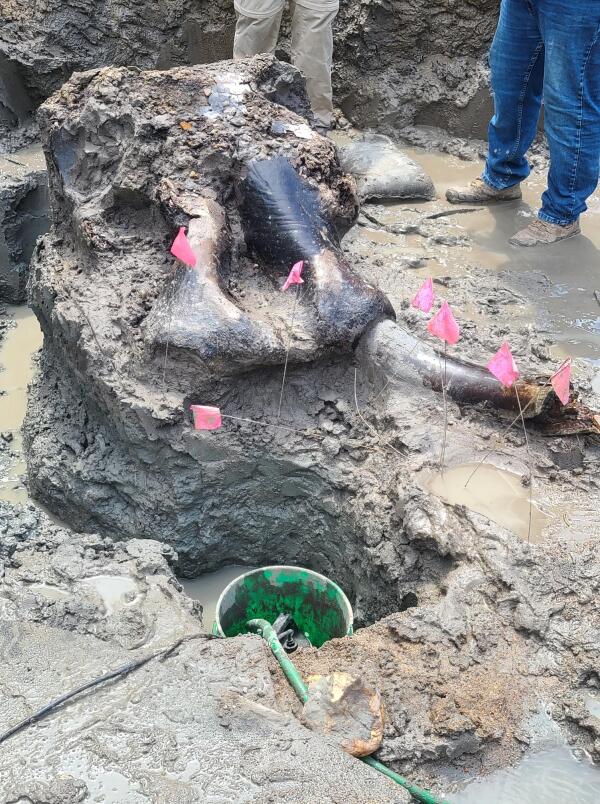A 13,600-year-old mastodon skull is unearthed in an Iowa creek
Go Deeper.
Create an account or log in to save stories.
Like this?
Thanks for liking this story! We have added it to a list of your favorite stories.

Iowa researchers say they’ve excavated the state’s first well-preserved mastodon, a roughly 13,600-year-old specimen that was found in the southern part of the state.
The University of Iowa’s Office of the State Archaeologist said in a Facebook post that the 12-day excavation involving staff and local community members yielded “several mastodon bones,” primarily from the skull.
Radiocarbon dating indicates that this mastodon is roughly 13,600 years old, archaeologists say, and researchers will now scrutinize the bones to look for “any evidence of human activity, such as cut marks.”
“We’re really hoping to find evidence of human interaction with this creature — perhaps the projectile points and knives that were used to kill the animal and do initial butchering,” said John Doershuk, the director and state archaeologist at the Office of the State Archaeologist, in a statement. “There’s also potential evidence on the bones themselves — there could be identifiable cut marks.”
Turn Up Your Support
MPR News helps you turn down the noise and build shared understanding. Turn up your support for this public resource and keep trusted journalism accessible to all.
The American mastodon, or Mammut americanum, is a member of the same order as modern-day elephants.

Having stood at nearly 10 feet fall with twisty tusks, mastodons existed from 3.5 million years ago to roughly 10,500 years ago, according to the University of Iowa. Their fossils have been discovered across North and Central America.
Iowa archaeologists said the site of the dig along an eroding creek bank in Wayne County was first brought to their attention in 2022.

The mastodon bones will form part of a new exhibit at the Prairie Trails Museum in Corydon, Iowa, after conservation and analysis is finished at the university.
Copyright 2024, NPR


